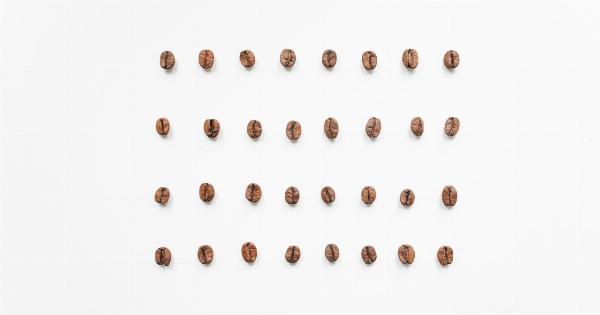Hepatic deficiency, also known as liver dysfunction or liver disease, refers to various conditions that affect the normal functioning of the liver.
The liver plays a crucial role in detoxification, metabolism, digestion, and various other bodily functions. When the liver is not functioning properly, it can lead to a range of health issues. While there are various ways to diagnose and monitor hepatic deficiency, one of the effective methods is through imaging techniques.
In this article, we will explore the use of images in warning and diagnosing hepatic deficiency.
1. Ultrasound Imaging
Ultrasound imaging, also called sonography, uses high-frequency sound waves to create images of the liver and surrounding organs.
It is a non-invasive imaging technique that can help identify liver abnormalities such as cirrhosis, fatty liver, and liver tumors. The images obtained through ultrasound can provide valuable information about the size, shape, and texture of the liver, allowing healthcare professionals to assess the presence and severity of hepatic deficiency.
2. CT Scan
Computed tomography (CT) scan is another imaging modality that can be used to identify hepatic deficiency. It uses X-rays and computer technology to create detailed cross-sectional images of the liver.
CT scans can detect liver diseases such as hepatitis, liver abscesses, and liver fibrosis. The images obtained from a CT scan can provide information about the size, shape, and density of the liver, helping in the diagnosis and monitoring of hepatic deficiency.
3. MRI
Magnetic resonance imaging (MRI) is a powerful imaging technique that uses a magnetic field and radio waves to create detailed images of the liver. MRI can provide information about liver diseases like liver cancer, liver cysts, and liver masses.
The images obtained through MRI can show the internal structures of the liver, allowing healthcare professionals to assess the extent of hepatic deficiency and plan appropriate treatment strategies.
4. FibroScan
FibroScan is a non-invasive imaging technique specifically designed to assess liver stiffness, which is an indicator of liver fibrosis. Liver fibrosis is a common consequence of hepatic deficiency and can progress to cirrhosis if not treated.
FibroScan uses a specialized probe that transmits vibrations into the liver and measures the speed at which these vibrations travel through the liver. Based on the measured liver stiffness, healthcare professionals can determine the severity of hepatic deficiency and the extent of liver fibrosis.
5. Liver Biopsy
Liver biopsy is a diagnostic procedure in which a small piece of liver tissue is extracted and examined under a microscope.
While not an imaging technique per se, liver biopsy provides crucial information about the liver’s health and can help diagnose hepatic deficiency. During the procedure, an imaging technique such as ultrasound or CT scan is often used to guide the biopsy needle to the right location in the liver.
The obtained tissue sample can then be analyzed to identify liver diseases and assess the severity of hepatic deficiency.
6. Nuclear Medicine Imaging
Nuclear medicine imaging involves the use of small amounts of radioactive substances to create images of the liver.
Techniques such as positron emission tomography (PET) and single-photon emission computed tomography (SPECT) can be used to assess liver function and detect liver abnormalities. These imaging techniques can provide valuable information about the metabolic activity and blood flow in the liver, aiding in the detection and diagnosis of hepatic deficiency.
7. Contrast-Enhanced Imaging
Contrast-enhanced imaging techniques, such as contrast-enhanced ultrasound (CEUS) and contrast-enhanced CT scan, involve the use of contrast agents to improve the visibility of the liver on images.
These contrasting agents help highlight abnormalities in the liver, such as tumors or areas of reduced blood flow. Contrast-enhanced imaging can provide additional information about the liver’s structure and help detect hepatic deficiency at an early stage.
8. Virtual Liver Biopsy
Virtual liver biopsy is a non-invasive alternative to traditional liver biopsy, which uses imaging techniques to assess liver health. Virtual liver biopsy can be performed using imaging modalities such as MRI, CT scan, or ultrasound.
These techniques analyze the liver’s structure, density, and stiffness to assess liver fibrosis and liver steatosis (fatty liver). Virtual liver biopsy provides valuable information about hepatic deficiency without the need for an actual tissue sample.
9. Multi-Phase Imaging
Multi-phase imaging involves capturing images of the liver at different time intervals after the injection of a contrast agent. This technique provides dynamic information about blood flow in the liver and helps identify liver abnormalities.
Multi-phase imaging can help detect diseases such as hepatocellular carcinoma (a type of liver cancer) and liver metastases. By analyzing the images obtained at different phases, healthcare professionals can diagnose and monitor hepatic deficiency more effectively.
10. Imaging-Guided Interventions
In addition to diagnosing hepatic deficiency, imaging techniques can also be used to guide interventions and treatments.
For example, ultrasound-guided liver biopsy, CT-guided tumor ablation, and MRI-guided liver surgery are procedures in which imaging techniques help healthcare professionals accurately target specific areas in the liver for treatment. These interventions can improve the outcomes of hepatic deficiency management and reduce the risk of complications.
Conclusion
Imaging techniques play a crucial role in warning, diagnosing, and monitoring hepatic deficiency.
From ultrasound and CT scans to MRI and nuclear medicine imaging, these modalities provide valuable insights into liver health and help healthcare professionals make informed decisions regarding hepatic deficiency treatment. Whether it is assessing liver fibrosis, detecting liver tumors, or guiding interventions, imaging techniques prove to be indispensable tools in the fight against hepatic deficiency.






























